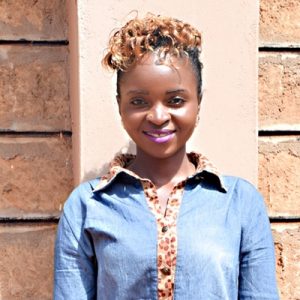"The pursuit for water is a very energy-draining duty in this area," said Mary Nguno.
The more than 2,000 people in Katovya Community must travel more than two kilometers to collect water from Masaki River or from a neighboring community's water kiosk. Both sources provide water that is unsafe for drinking because it comes from sources open to contamination.
Masaki River is seasonal and the area is prone to prolonged dry seasons. There were small wall gabions which were constructed by the county government along this river in a bid to curb water run-off during the rains, but the wall is not functional as it is very porous and causing lots of water loss.
People dig into the sand of the riverbed to get water. These scoop holes provide water but run dry very fast because they are often overcrowded and the water table is usually very low. In addition, these sources are always open and so are also used by animals. There's a water kiosk, but it is very far and the water is usually very costly to purchase.
"Attaining clean water is very hard. At times we forego such luxuries because we have other duties to perform," Mrs. Nguno explained.
"During the drought periods, there are usually a lot of feuds at the water sources, long queues, theft of donkeys and jerrycans, animal attacks from the donkeys and snakes. The water source may be overcrowded so one has to wait for more than four hours waiting for their turn to fetch the water."
The water kiosk is a popular alternative during the dry season, but it too is a long distance away from the community and people have to pay to fill up water at the source. That is a burden on many of the households that already struggle to get by.
Our main entry point into Katovya Community is the Nzighi Masaki Self-Help Group, which is comprised of 271 farming households that are working together to address water and food scarcity in their region. These members will be our hands and feet in both constructing water projects and spreading the message of good hygiene and sanitation to everyone.
Community members of Kalovya Village depend on farming as their primary source of income, although it is not reliable because they only farm during the rainy seasons. The region is prone to perennial water problems and inconsistent rainy patterns rendering only the financially capable homes to depend on farming, as it often becomes an expensive activity during the dry seasons. This is as a result of the water challenges experienced in the area.
In this community, the building structures are a mixture of both bricks and mud. The area is scarcely populated as the homesteads are roughly one or two kilometers apart. It is a fairly vegetative area; the most popular planted crops are sorghum, millet, maize, and beans.
What we can do:
Sand Dam
After the community picked the spot, our technical team went in and proved the viability by finding a good foundation of bedrock. Now, our engineers are busy drawing up the blueprints. We estimate the dam will be 64.4 meters long and 6.3 meters high.
We are unified with this community to address the water shortage. As more sand dams are built, the environment will continue to transform. As the sand dams mature and build up more sand, the water tables will rise. Along with these sand dams, hand-dug wells (check out the hand-dug well being installed next to this dam) will be installed to give locals a good, safe way to access that water.
With these projects, clean water will be brought closer to hundreds of people in Katovya, Kenya.
Hygiene and Sanitation
The community members of Katovya Village attempt to maintain good hygiene and sanitation lifestyles when the water is available as they have clothes lines, some homesteads have latrines, a bathing shelter and a kitchen. However, their biggest area of improvement is on latrine hygiene, compound hygiene, handwashing habits, water treatment and enlightenment on disease transmission.
"We can go for days without bathing because water is so scarce; we are struggling to survive," said Bernard Mwangangi. "Cleanliness is honestly not well maintained. The latrines are rarely washed at times we used to apply ash to dispense the odor."
We will hold hygiene and sanitation training sessions with Nzighi Masaki Self-Help Group, which are also open to non-members. These will teach about important hygiene practices and daily habits to establish in the community at the personal and household levels. Taking good care of self and environment will make for a healthy community.

 Sand Dam
Sand Dam
 Rehabilitation Project
Rehabilitation Project

































